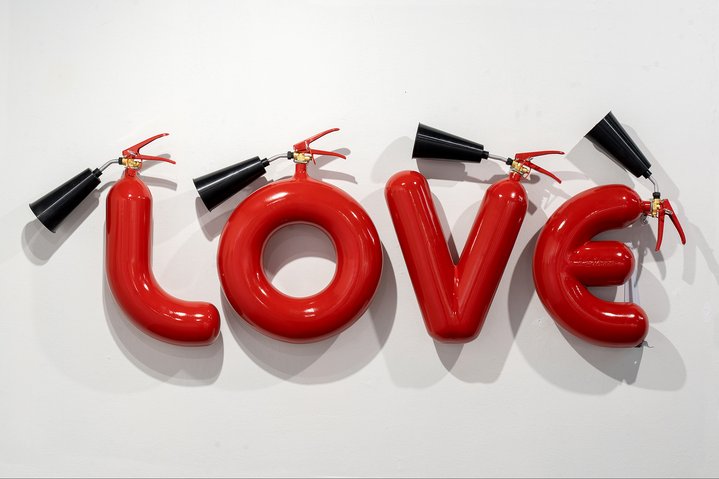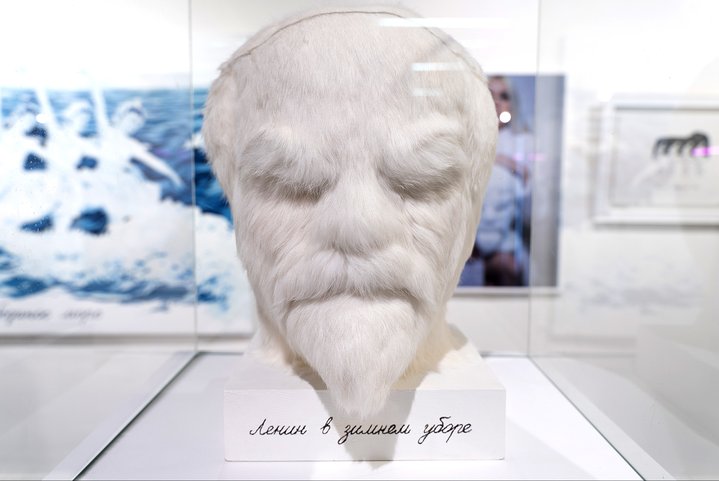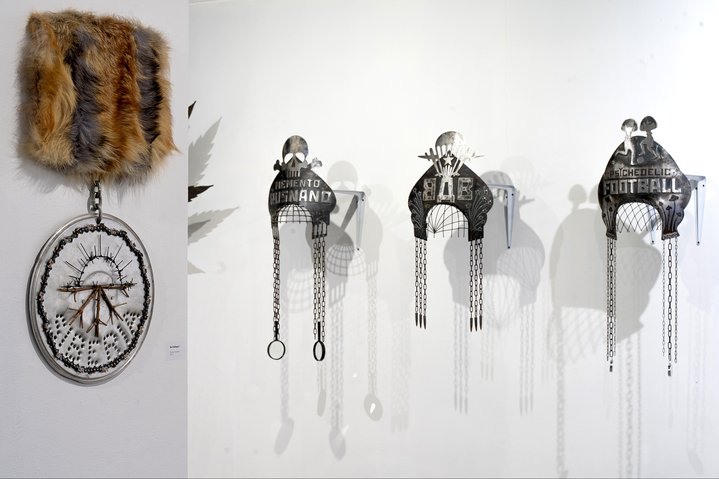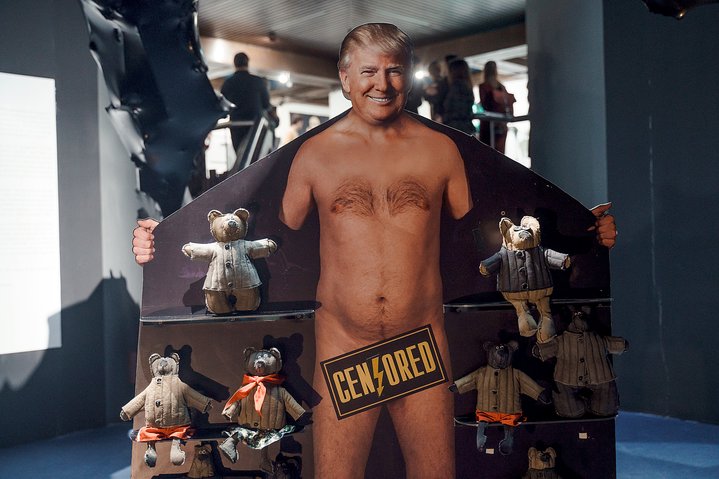Mayana Nasybullova. ‘Roots of a Head’, 2020. Photo courtesy Museum Centre Ploschad Mira
The exhibition of Siberian Ironic Conceptualism is now on display at the former Lenin museum in Krasnoyarsk. Art historian Antonio Geusa reflects on the history of the movement.
‘Siberian Ironic Conceptualism’ (SIC) is a nice verbal invention. Simply because not everything in it is from Siberia, not everything in it is ironical, and, most importantly, it has very little to do with conceptualism. However, it is a perfect label. It flirts with two of the most studied and exhibited movements in the history of Russian contemporary art of the past 50 years, the “Moscow Romantic Conceptualism” (as coined by Boris Groys in 1979) and “Sots Art” (Vitaly Komar’s and Alexander Melamid’s label from the early 1970s). Nonetheless, SIC is not the continuation, adaptation, or reinterpretation of these two art movements. This is art made in Siberia, or to be more precise, this is art made in the “United States of Siberia”.
SIC was born not as a manifesto signed by its members, but as the title of an essay written by Alexander Shaburov, which accompanied the travelling ‘United States of Siberia’ exhibition, a project that started in 2013. It presents instead an historical overview – with, alas, substantial factual imprecisions – of the first steps of contemporary art (early 1990s) in Novosibirsk and Yekaterinburg and biographical notes about artists from other Siberian cities. The first image we have of SIC tells us that Siberia, in this case, is intended as a vast territory that spans from the Urals to the Pacific Ocean. After the collapse of the Soviet Union, there was an urge to devise strategies that would turn "Siberia" into a brand for the post-Soviet space. SIC was never part of this game. There is no “Siberian Otherness” here. It bluntly states that artists living and working in Siberia see it (and live it) as the norm. From the history of the appearance of contemporary art in Novosibirsk and Ekaterinburg, we find that the first break with tradition in many cases took the form through “paper architecture” and that what SIC stands for are wild performances, underground rock music, paintings and sculptures in open contrast with academic teachings. Deeply rooted in the present, these are the works of outsiders who cannot conform to the status quo and resort to irony (and its variations, such as black humor, self-mockery, parody, sarcasm and the grotesque) to deconstruct the absurdity of the surrounding world, but not necessarily in Siberia. Although not explicitly stated in the essay, these outsiders resemble the holy fool of old Russian tradition, who mocks the Tsar Boris Godunov and gets away with it because of the wisdom in his madness.
‘Siberian Ironic Conceptualism’ is not defined by theoretical analysis, at least not yet. The lack of a proper manifesto spurred three curators (Vyacheslav Mizin, Sergey Samoylenko and Pyotr Zherebtsov) to put together an exhibition and courageously present it as the SIC manifesto. This exhibition-manifesto was first shown at the CC 19 Centre for Culture in Novosibirsk in November 2019 and then, in February 2020, in its upgraded version, including brand new works, it went to the Ploschad Mira (‘Peace Square’) Museum Centre in Krasnoyarsk. It was a move in line with the way Russian contemporary art writes its history that has consolidated the status of SIC as a legitimate movement. Given that SIC is a living organism still in the process of forming itself, the exhibition does not develop along chronological lines. It mixes together those artists who have been part of it from its very beginning (such as the Blue Noses, Konstantin Skotnikov, Dmitry Bulnygin, Artem Loskutov, Vasily Slonov, and Damir Muratov) with artists who have been included after the launch of the ‘United States of Siberia’ project, especially those from the younger generation (Natasha Yudina, Mayana Nasybullova, Sergey Rozhin, Alexander Zakyrov, to name a few).
What most of the works have in common (in particular, those whose irony is immediately readable) is the use of Soviet and Russian symbols, from Vladimir Lenin to the Russian flag, from Cheburashka to Sberbank, to deconstruct life in the present time. Although, one would expect an explanation (through irony) from artists living and working in Siberia of what the “Taiga Law inside Us” (to quote Damir Muratov) is all about, their works are more about Russia and its contradictions, than about Siberia. Deeply rooted in Russian culture, SIC uses a language that is quite straightforward and easy to understand. Unquestionably, this is one of its main defining principles from the very start.
SIC was born soon after Perestroika, when Socialist Realism lost its monopoly and power to censor nonconformist art and Siberia was still a territory with poor and discontinuous support to new forms of artistic expression with a lot of misunderstandings. The public had never seen art that was so radically distant from tradition. Such simplicity, immediateness and abundance of easy-to-read metaphors were a strategic necessity to plant the contemporary art flag in the vast territory of Siberia. As far as contemporary art goes, Siberia appears to be much freer than the rest of Russian contemporary art, much more prone to introspection, and aesthetization of everyday life whilst critical attitudes, especially towards political power, seem to be rare. Siberian art is much freer. A strong example of this is Artyom Loskutov’s new painting technique ‘Dubinopis’ (2019), which translates as “Painting with a police truncheon”.
Siberian Ironic Conceptualism [sic]
Krasnoyarsk, Russia
7 February – 12 April 2020












